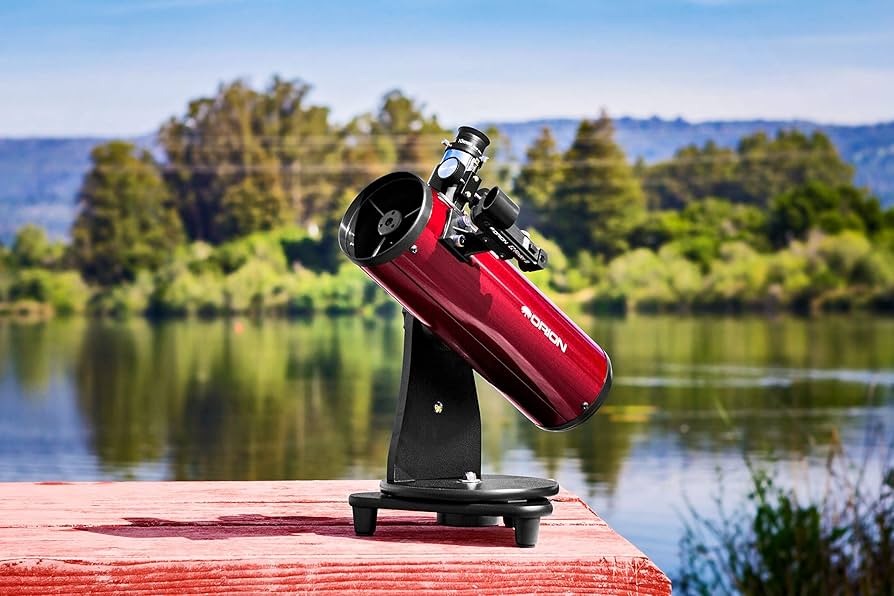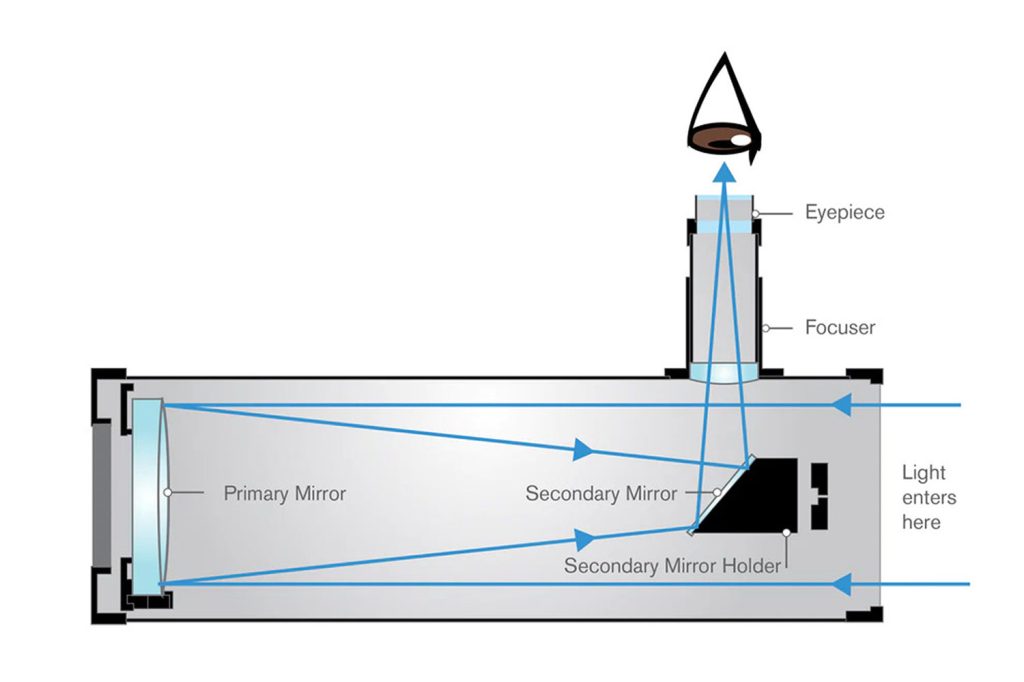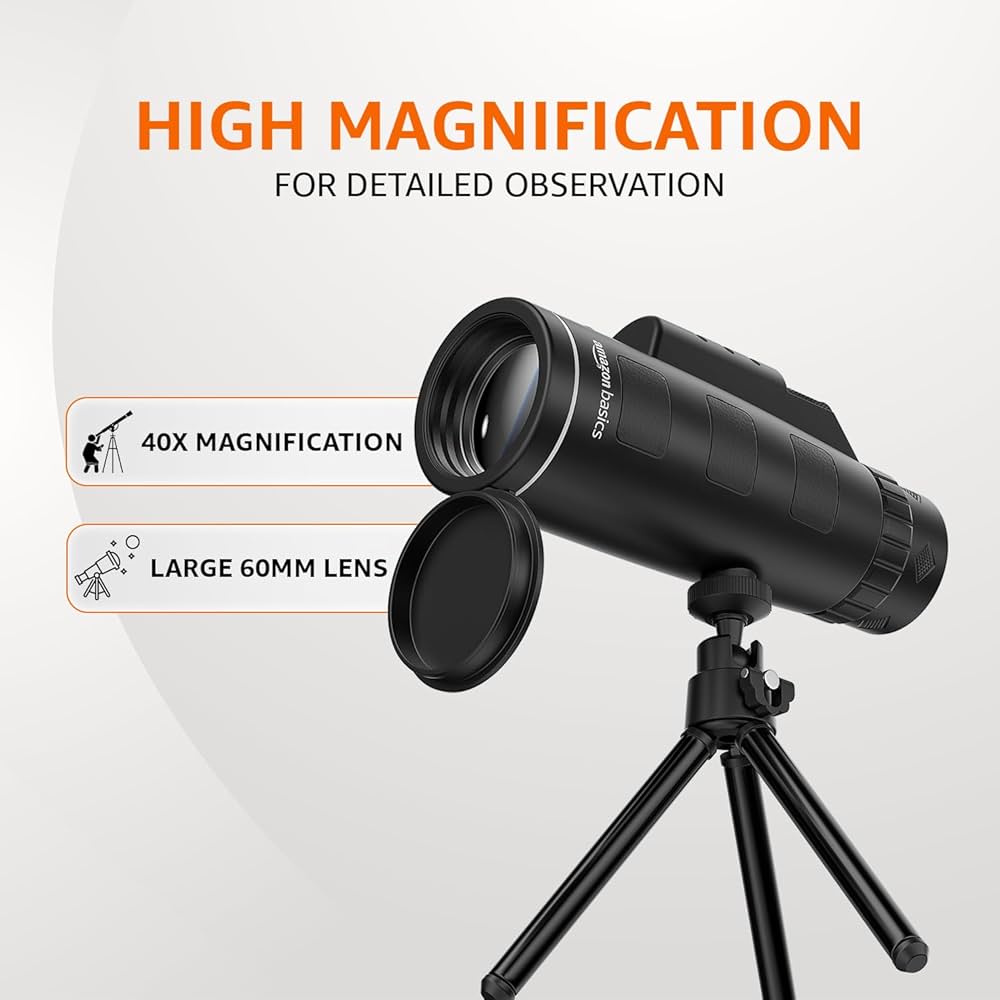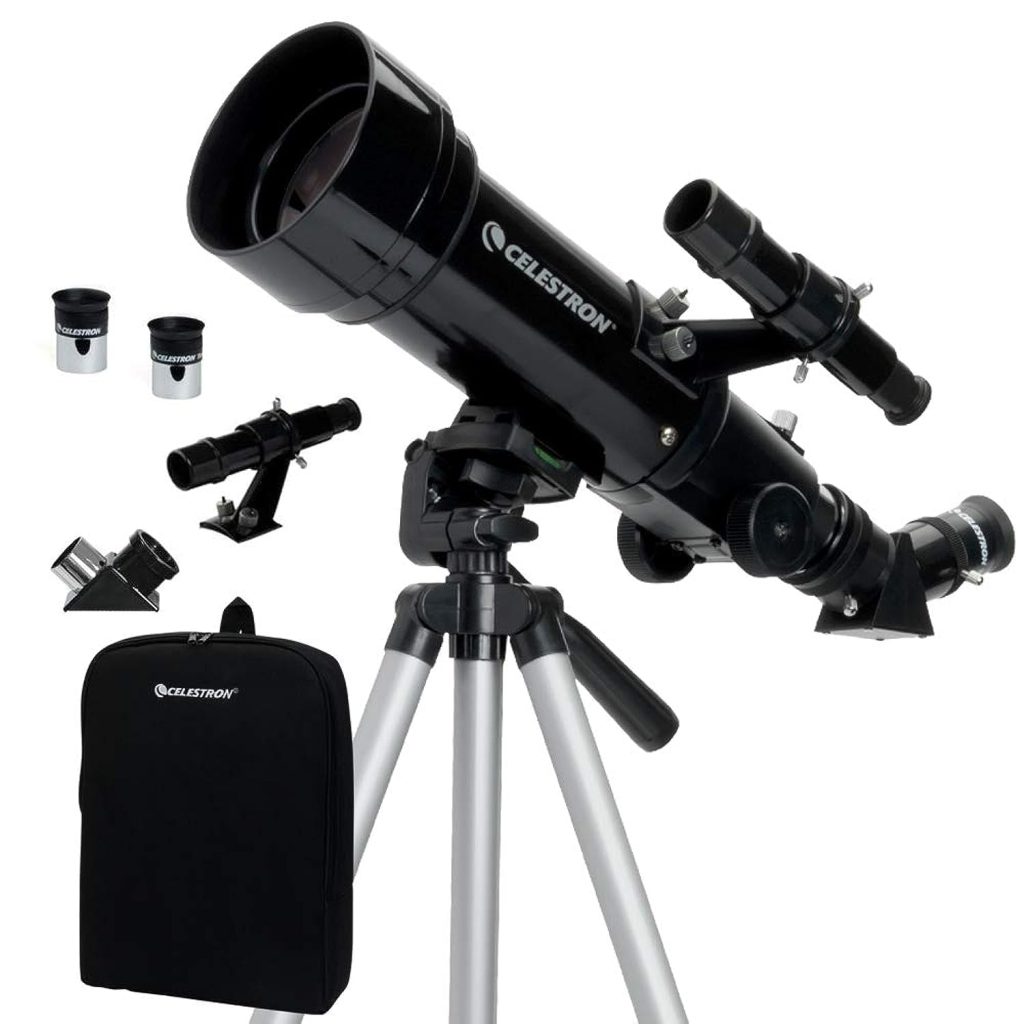Introduction
Buying your first telescope is an exciting step into astronomy, but the variety of options can be overwhelming. This guide simplifies the process and helps you choose the right telescope based on your interests, needs, and budget.
What Do You Want to See?
Start by thinking about what you want to observe:
- The Moon and planets (good for beginners)
- Deep-sky objects like nebulae, star clusters, and galaxies
- A mix of both
- Astrophotography potential
- Portability for travel or outdoor use

Understanding Telescope Types
Refractor Telescopes
- Use lenses to form images
- Great for clear views of the Moon and planets
- Require little maintenance
- More expensive per inch of aperture

Reflector Telescopes
- Use mirrors to gather and focus light
- Ideal for deep-sky objects
- Offer more aperture for your money
- Require occasional mirror alignment (collimation)

Compound (Catadioptric) Telescopes
- Combine mirrors and lenses
- Compact and versatile
- Good for all-around use and photography
- Tend to be more expensive

Key Features to Consider
Aperture
- The diameter of the main lens or mirror
- Larger apertures gather more light, providing brighter and clearer views
- Beginners should aim for at least:
- 70mm for refractors
- 114mm for reflectors


Focal Length
- Determines how “zoomed in” your view is
- Long focal lengths provide higher magnification
- Shorter focal lengths give wider fields of view

Magnification
- Depends on both the focal length of the telescope and the eyepiece
- More magnification isn’t always better—clarity and stability matter more

Choosing the Right Mount
Altazimuth (AZ) Mount
- Moves up/down and left/right
- Simple and intuitive for beginners

Equatorial (EQ) Mount
- Aligns with Earth’s rotation for better tracking
- Great for longer viewing sessions and astrophotography
Motorized GoTo Mount
- Automatically locates and tracks celestial objects
- Helpful for beginners learning the night sky
Portability & Storage
Think about:
- Where you’ll use the telescope (backyard, field, road trips)
- How much space you have at home
- How heavy the setup is

Tips:
- Refractors are usually compact and portable
- Dobsonian reflectors offer big views but take up more space
- Compound scopes are compact and travel-friendly
Look for Useful Accessories
Many beginner telescopes come in kits that may include:
- Multiple eyepieces
- A Barlow lens (to double magnification)
- A finderscope or red dot finder for locating objects
- Star charts or access to astronomy apps
Avoid telescopes advertising “600x magnification!”—it’s unrealistic and usually means poor quality.
Estimated Budget to Get Started
Here’s what you can generally expect in each price range:
- Under $100: Basic beginner refractors, suitable for viewing the Moon and a few planets
- $150–$300: Entry-level reflectors and refractors with better mounts and optics
- $300–$600: Mid-range scopes with larger apertures, better accessories, and occasional GoTo tracking
- $600 and above: High-quality telescopes, often with tracking systems and suitable for astrophotography

Learn from Others Before Buying
Before making a purchase, consider:
- Visiting a local astronomy club
- Attending a star party to try different telescopes
- Joining forums like Cloudy Nights or Reddit’s r/telescopes
- Watching YouTube reviews of specific models
Getting hands-on advice can help you make a smarter, more confident decision.
Conclusion
Choosing your first telescope doesn’t have to be intimidating. Focus on your observing interests, understand the different types and features, and invest in quality over gimmicks. With the right scope, you’ll be ready to explore the universe from your own backyard.


